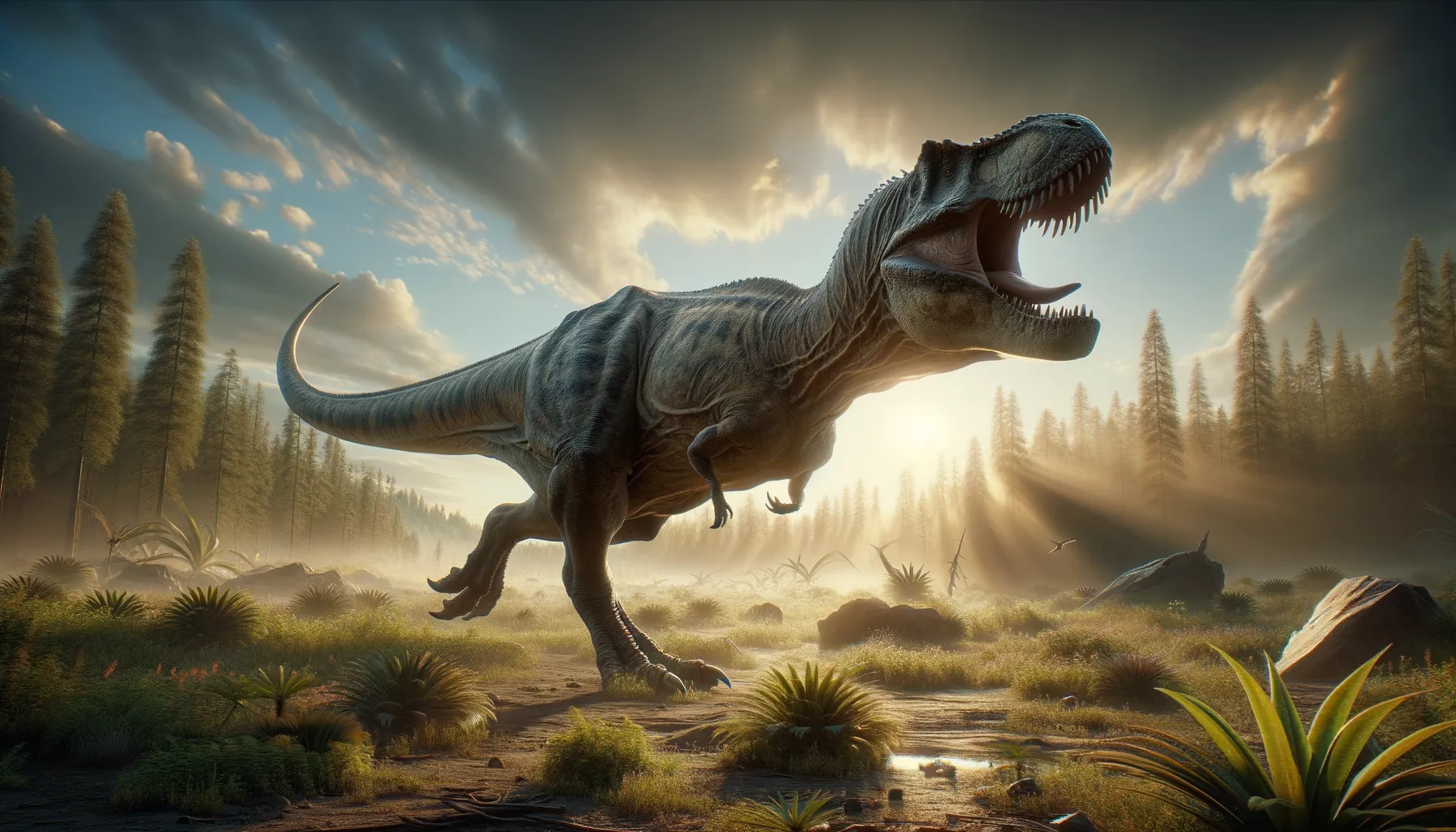
Macrurosaurus
Explore the mystery of forgotten giants.
Period
Cretaceous
Length
Approximately 15 to 20 meters long.
Height
Exact height unknown; believed to be substantial.
Weight
Estimated to be several tons.
Macrurosaurus was a large dinosaur known primarily from limited fossil remains. This herbivorous giant roamed the Earth during the Cretaceous period, contributing to the diverse ecosystem of the time. Its size suggests it might have had a cumbersome gait, reflecting the challenges of existing as a massive creature. Despite the scarcity of complete skeletons, Macrurosaurus remains a fascinating subject for paleontologists who strive to piece together its lifestyle and environmental interactions.
Diet
As an herbivore, Macrurosaurus likely fed on a variety of plants, including leaves, ferns, and possibly conifer twigs. With its massive size, it would have needed to consume large quantities of vegetation to sustain itself.
Hunting
Being an herbivore, Macrurosaurus did not hunt for food. Instead, it would have spent much of its time grazing within rich, vegetative regions.
Environmental challenges
Macrurosaurus faced environmental challenges such as changing climates and the availability of food sources. Natural disasters like volcanic eruptions and flooding could have affected its habitat. Additionally, the potential presence of large predators posed a threat to its survival.
Speed
Likely slow-moving due to its size.
Lifespan
Unknown due to limited fossil evidence.
First discovery
First discovered in the late 19th century.
Fun Facts
- Macrurosaurus was a dinosaur that lived during the Late Jurassic period, around 150 million years ago.
- Its name means 'long-tailed lizard', which is fitting since it had an extremely long tail.
- Macrurosaurus is part of the sauropod group, known for their enormous size and long necks.
- Fossils of Macrurosaurus have been found in parts of Europe, specifically in England.
- It was first described by the famous paleontologist Harry Seeley in 1869.
- Though not as well-known as some other dinosaurs, Macrurosaurus gives us insights into the diverse sauropod family.
- Macrurosaurus stood out for its lengthy tail, which likely helped with balance and mobility.
Growth and Development
From hatchling to adulthood, Macrurosaurus underwent significant growth, reaching large sizes to deter predators. Its development might have required extended care by family groups or adults to ensure safety. Over many years, it adapted physically to meet the demands of its environment.
Habitat
Macrurosaurus lived in what is believed to be forested areas, rich in plant life essential for its diet. This dinosaur thrived near water sources, which were vital for both hydration and the growth of vegetation. Over time, habitat changes could have influenced its distribution and population.
Interaction with other species
Macrurosaurus potentially coexisted with other herbivorous dinosaurs and shared grazing grounds, thus facing competition. Larger predatory dinosaurs could have been a significant threat, prompting defensive behaviors or reliance on herd dynamics. Symbiotic relationships with smaller creatures might have helped in mutual protection or pest control.
Natural lifespan
Its natural lifespan remains uncertain due to incomplete fossils.
Reproduction
Like many dinosaurs, Macrurosaurus likely laid eggs, possibly in communal nesting sites. Adult dinosaurs may have guarded the eggs or young from predators. The reproductive cycle might have been seasonal, coinciding with favorable environmental conditions.
Social behaviour
Macrurosaurus might have exhibited herd behavior, which provided protection against predators. Social structures might have existed, possibly with hierarchies or organized roles during migration. Interactions within groups could have included communication through sounds or visual displays.
Fossil locations
Fossils of Macrurosaurus have been scarce and not well-documented, leading to uncertainties about its precise locations. Some remains attributed to this dinosaur have been found in England, although their exact identification has been debated. Its discoveries remain a subject of interest to fully understand its geographical spread.
